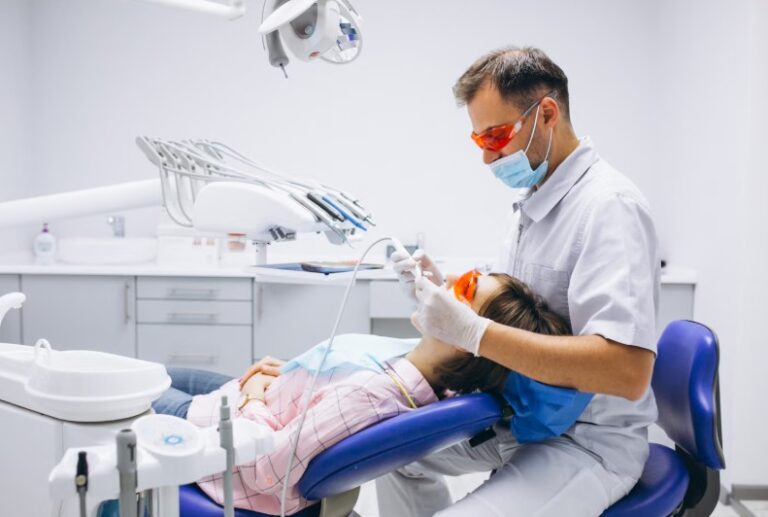
Cosmetic dentistry continues to advance rapidly as technology reshapes the way dental procedures are performed. These developments focus on improving patient outcomes, streamlining processes, and enhancing the precision of techniques used by dental professionals. Here is information about the fundamentals of this dental specialty and the key advancements shaping the field currently:
What Is Cosmetic Dentistry?
Cosmetic dentistry encompasses dental procedures aimed at improving the appearance of a patient’s teeth, gums, or bite. Unlike general dentistry, which focuses on oral health and the prevention or treatment of diseases, cosmetic dentistry concentrates on aesthetic results. While cosmetic treatments are often elective, some procedures may overlap with restorative dentistry when addressing function and appearance.
Common treatments include veneers, crowns, and orthodontic aligners. These services address concerns such as discoloration, misalignment, or gaps between teeth. Though many procedures are non-invasive, others may require more complex interventions.
The field has evolved significantly over the years. Advances in materials, techniques, and technology have made treatments more efficient and accessible. This evolution has allowed patients to select from a broader range of options tailored to their specific dental needs and goals.
What Are the Current Advancements and Trends in Cosmetic Dentistry?
Several advancements and trends are emerging as key influences on modern cosmetic dentistry. These innovations improve the precision of dental procedures while making them more accessible and sustainable. Personalized treatment planning enables dentists to create highly customized and predictive patient outcomes.
Digital Smile Design
Digital smile design uses advanced software to create virtual simulations of a patient’s smile following cosmetic treatment. By leveraging high-resolution imaging and 3D modeling, dentists can visualize potential outcomes and share them with patients before procedures are performed. This technology allows for personalized treatment planning and enhances communication between patients and dental professionals.
AI-Assisted Diagnostics and Treatment Planning
Artificial intelligence (AI) is increasingly involved in the diagnostics and planning phases of this specialty. Machine learning models analyze patient data, dental scans, and treatment outcomes to assist professionals in formulating optimized plans. This trend supports greater precision, reducing the likelihood of errors during complex procedures.
Minimally Invasive Treatments
There is a growing emphasis on minimally invasive treatments in cosmetic dentistry, enabling patients to achieve aesthetic improvements with reduced recovery periods. Advances in materials, such as composite resins and ultra-thin veneers, allow dentists to preserve more of the natural tooth structure during treatment. Laser technology is also used for procedures like gum contouring, which minimizes discomfort and speeds up recovery times.
Biocompatible and Eco-Friendly Materials
The use of sustainable and biocompatible materials is becoming increasingly prominent. High-strength ceramics and metal-free alternatives cater to patients seeking durable yet natural-looking solutions. Moreover, eco-conscious manufacturing processes establish that materials leave a smaller environmental footprint, aligning with global sustainability trends.
Customizable Orthodontics
Customized orthodontic solutions, such as advanced clear aligner systems, are gaining popularity. These systems use 3D imaging to create personalized treatment plans, providing patients with discreet and efficient options for addressing dental misalignment. Enhanced designs and materials are improving the comfort and effectiveness of aligners.
Advanced Tooth-Whitening Technology
Tooth whitening remains one of the most popular cosmetic procedures, and innovations are improving safety and results. LED whitening devices are gaining traction. These systems use light-activated gels to enhance brightness while minimizing sensitivity. Professional-grade technology is also refining over-the-counter options.
Integration of 3D Printing
3D printing is revolutionizing the creation of dental products, from crowns and bridges to veneers. This technology rapidly produces precise and durable restorations, reducing the time between diagnostics and treatment completion. By integrating 3D printing into their workflow, dental professionals can provide more efficient care while maintaining a high-quality standard.
Also Read: What to Expect During Your First Visit to a Cosmetic Dentist?
Learn More About What’s New in Cosmetic Dentistry
Today’s cosmetic dentistry combines technological advancements with patient-centered care. Whether through digital design, AI-powered planning, or eco-friendly materials, the field’s ongoing innovations are expanding the possibilities of achieving aesthetic goals with precision and flexibility. Contact a qualified cosmetic dentist to explore the latest treatments and find the right option for your needs.








